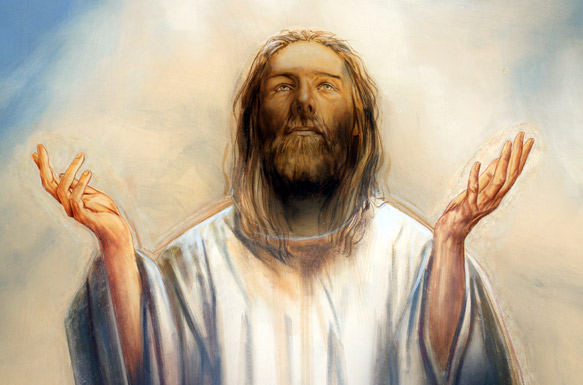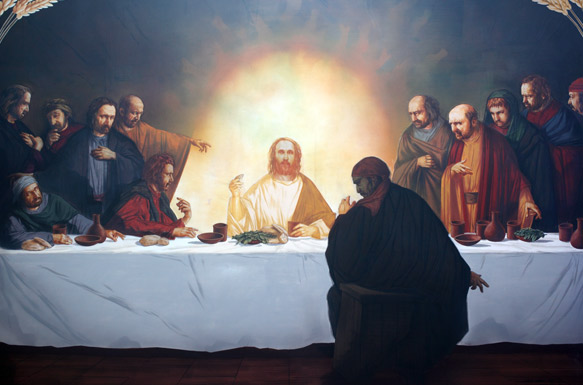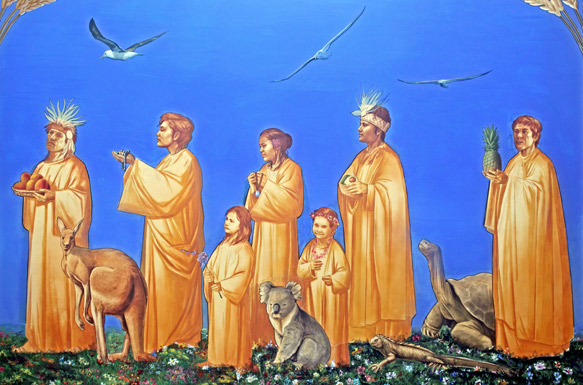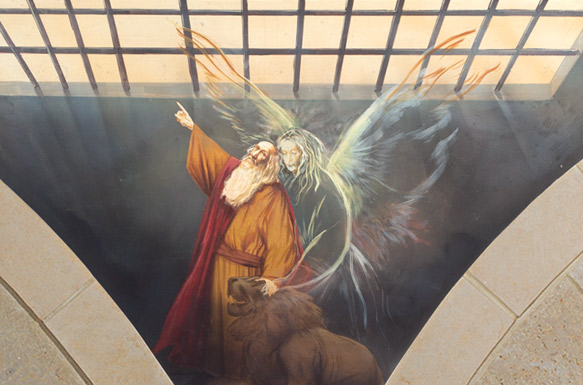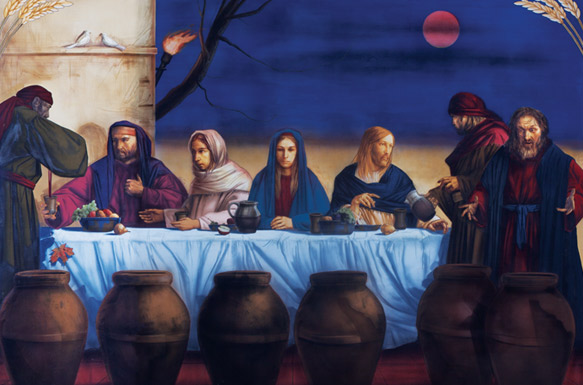Fresco
A series of twenty-four large panels and twenty-four related spandrel images cover more than 3,700 square feet of the clerestory. Images of the life of Christ are interspersed with scenes depicting the Blessed from every nation making their procession and bringing their gifts to the New Jersualem.
The frescos lining the north and south clerestory walls of the church, are painted in the buon fresco (true fresco) tradition, dating back to the time of the ancient Romans, but made famous by Giotto, Michelangelo, and Fra Angelico. In preparation for the expansive mural painting at the Church of the Transfiguration, vats of fresh lime were mixed with water and allowed to age for more than six years. Full-scale studies of both hands and faces of the characters were drawn, that would later become part of the narrative. Silvestro Pistolesi, a native of Florence Italy and a student of Peitro Annigoni was the primary fresco artist, and trained members of the Community’s fresco guild. For more than 10 years, Pistolesi and one or two assistants from Italy (primarily Massimo Buccione) would travel to the church to paint a portion of the 54 compositions. The day would begin at 2:30 in the morning, with a fresh coat of wet plaster applied to the walls. Later, on the floor, the spolvero (full-scale drawing) was placed with thousands of holes along the drawing lines. It was then placed over the wet plaster and pounced with pigment dust, leaving behind a slight outline of dots. Informed by earlier full-scale studies and aided by the outline, the frescos were painted the colors of natural pigment. The plaster dried within one day, becoming part of the wall, and the remaining plaster that was not painted was removed in preparation for the next day’s work.
To watch videos on the creation of the Frescos, click here:
Frescos in process at the Church of the Transfiguration
Painting the Crucifixion Fresco
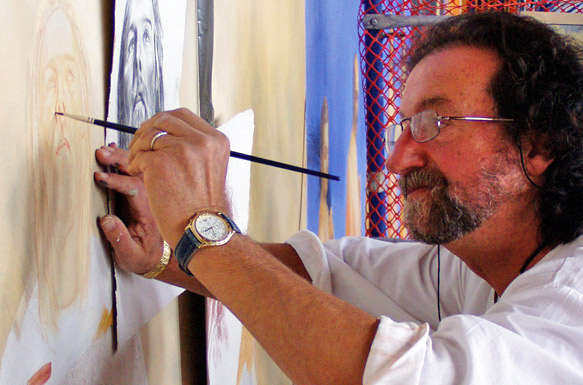
Maestro Silvestro Pistolesi was born in Florence, Italy on November 28, 1943. His artistic talents were evident at an early age. He attended the Scuola d’Arte di Porta Romana, and the Cappiello Accademia. He studied with Nerina Simi and Pietro Annigoni. With his first exhibition in London’s Arts Unlimited Gallery, Pistolesi gained worldwide recognition. Since that time he has exhibited in many Italian and foreign cities. Using the technique of “buon fresco,” Pistolesi has created large significant works at the Abbey of Montecassino, the Verna Sanctuary, the Abbey of Vallombrosa, and now, his largest fresco work, at the Church of the Transfiguration.
